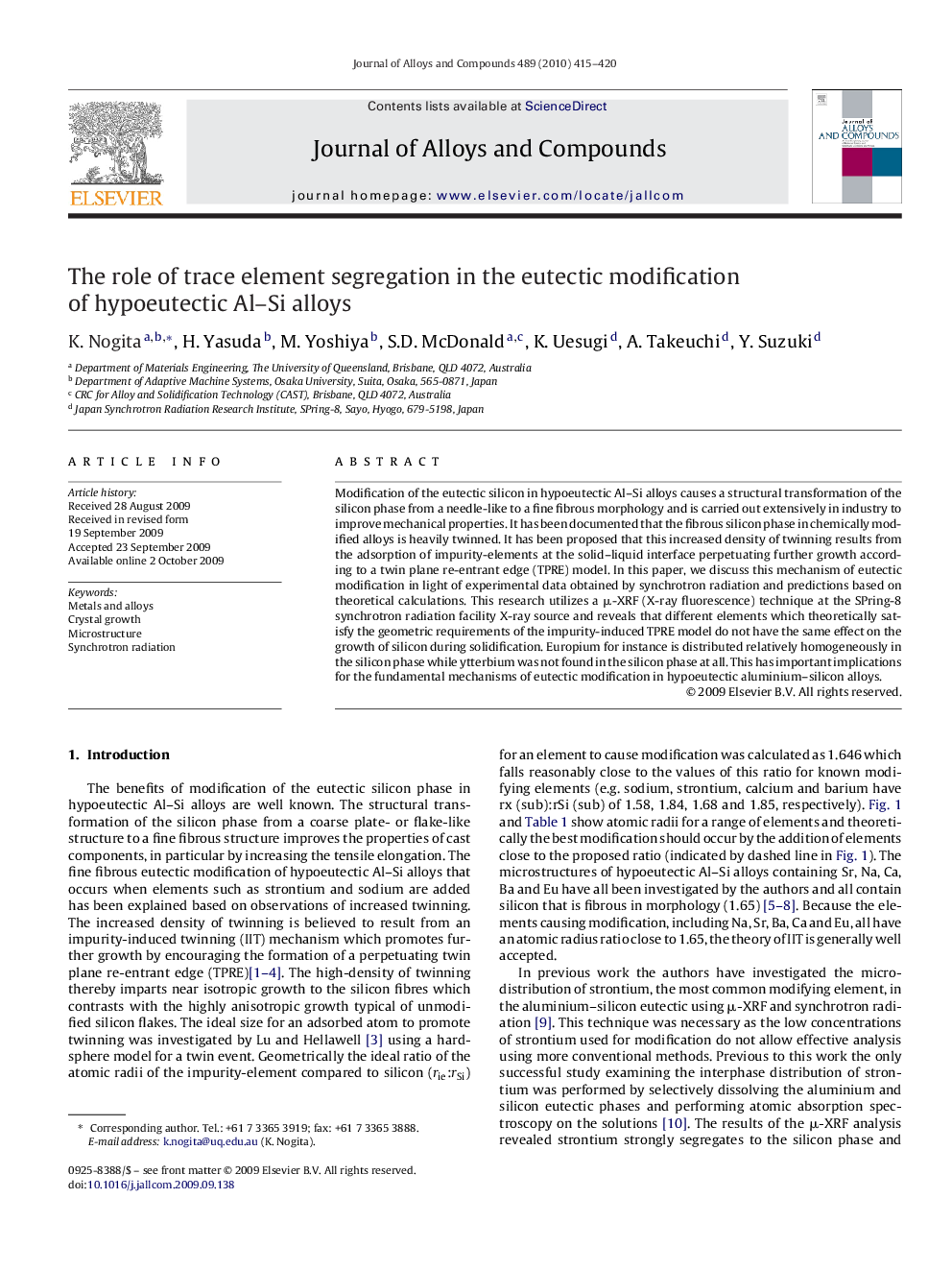| کد مقاله | کد نشریه | سال انتشار | مقاله انگلیسی | نسخه تمام متن |
|---|---|---|---|---|
| 1620938 | 1005741 | 2010 | 6 صفحه PDF | دانلود رایگان |

Modification of the eutectic silicon in hypoeutectic Al–Si alloys causes a structural transformation of the silicon phase from a needle-like to a fine fibrous morphology and is carried out extensively in industry to improve mechanical properties. It has been documented that the fibrous silicon phase in chemically modified alloys is heavily twinned. It has been proposed that this increased density of twinning results from the adsorption of impurity-elements at the solid–liquid interface perpetuating further growth according to a twin plane re-entrant edge (TPRE) model. In this paper, we discuss this mechanism of eutectic modification in light of experimental data obtained by synchrotron radiation and predictions based on theoretical calculations. This research utilizes a μ-XRF (X-ray fluorescence) technique at the SPring-8 synchrotron radiation facility X-ray source and reveals that different elements which theoretically satisfy the geometric requirements of the impurity-induced TPRE model do not have the same effect on the growth of silicon during solidification. Europium for instance is distributed relatively homogeneously in the silicon phase while ytterbium was not found in the silicon phase at all. This has important implications for the fundamental mechanisms of eutectic modification in hypoeutectic aluminium–silicon alloys.
Journal: Journal of Alloys and Compounds - Volume 489, Issue 2, 21 January 2010, Pages 415–420